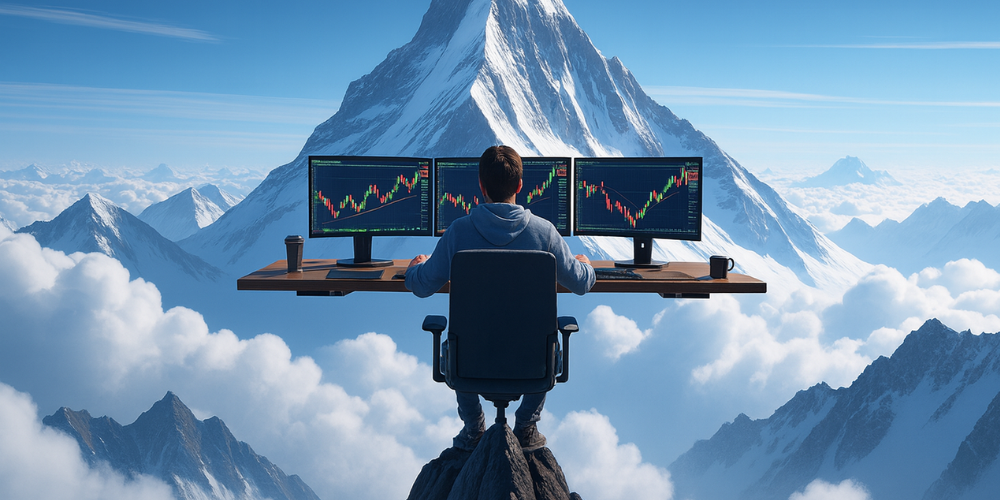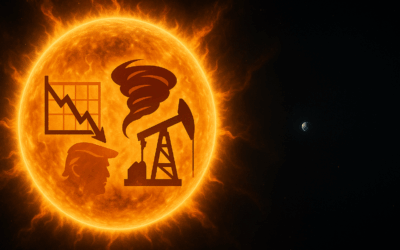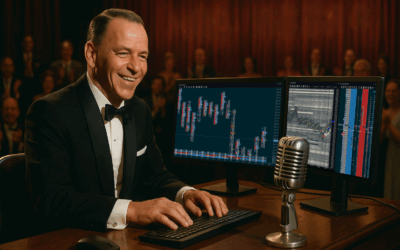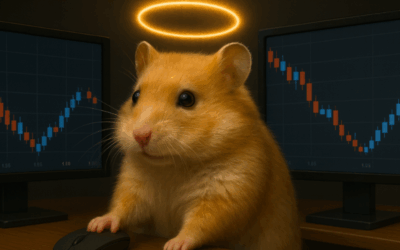Day Trading Rule #3 – What is Trading Edge?
Trading Edge. You’ve heard the word but likely not heard a relatable explanation.

BTW, before we start, I promise I won’t talk about embedding in this article. 😉
Before we hit a nice simple definition that will be obvious in hindsight, let’s look at some industry definitions.
- “A trading edge refers to a set of unique advantages or strategies that give us an increased probability of making profitable trades.”. Issue: Unique is not a requirement – quite the opposite.
- “It’s about using what you know better than anyone else to gain a competitive advantage.”. Issue: Better than anyone else?
- “Edges are probabilistic constructs manifesting in the confluence of market variables.”. Issue: Word Salad. Plus, are your goals really the “confluence of market variables” or making money?
It gets worse…
- “The quintessential trading edge resides in the harmonious alignment of expectancy and probabilistic foresight.”
- “It is the harnessing of probabilistic volatility patterns within an ever-shifting stochastic environment, where continuous adaptive learning allows a trader to anticipate and counteract the inefficiencies of traditional market equilibrium.”
- “A trading edge exists within the matrix of non-linear market psychology, enabling a trader to harness the chaotic flows of capital through the predictive power of deep-learning systems and advanced sentiment analytics.”
- “It is the ability to decode complex, high-dimensional market data using probabilistic reasoning to forecast movements with precision, exploiting transient price inefficiencies that others fail to notice.”
We have a saying in tech: “If you can’t blind them with science, baffle them with bullshit”.
Obviously some of these are people trying to impress with language, I guess as a technique to make people think, “I didn’t understand a word of that – he’s the guy to teach me how to trade”.
My definition of an edge is:
“Seeing something occur that moves the market in time to take advantage of it.”
Let’s break that down.
“Seeing something occur”
The ‘something’ could be any event. If you trade grain futures, it could be adverse weather – like an early frost killing crops. If you trade pork belly futures, it could be swine flu. If you trade Index futures, it could be market news or news about one of the larger members of the index. It could be an economic release.
It could also be in the charts – and that’s where traders make a mistake. They ONLY look in the charts. More on that in later lessons. The crux of it is that people think that “news or event” stuff looks hard to use, so don’t look at it. So they look at something that shows price movements only.
Donald Trump has a bit of a tendency to say things that move the market. And Angela Merkel during Brexit – I missed the fact she was doing a speech that day, I was long Bund (German Interest Rate Futures), she said something about Brexit that made me dislike her because although I was 20 prices (aka ticks) above my stop, my exit was 12 prices below it.
Note – we like to call these things “events” – from rain to news to charts to order flow (explained soon) – it’s all events. That’s different from setups.
“That moves the market”
That’s clear – although you can’t expect the same size move every time. The markets provide a different amount of opportunity each day. Your job is to take advantage of that or take a pass. So if you have an idea of making $1000 a day or if someone tells you that is possible, it’s nonsense. Sometimes the market puts nothing on the table, sometimes it might be $1,000, sometimes it’ll be -$1,000, and sometimes it’ll be $10,000. But sometimes, the move won’t be “all that”
“In time to take advantage of it”
Sometimes you see events occur in the market, but it’s too late to get into the market because the reaction is so swift or you can’t get a fill. Two traders could trade the event in different ways. Let’s say the event is a pullback in a strong news-driven trend. One trader might get in when he sees the pullback slow, pre-empting the continuation. Other traders might wait for the turn. That’s the “setup” part. The “How do I trade this recurring event?”.
Psychology does play a part – but this can be summed up as “not doing dumb stuff” – but it could be argued that psychology is not an edge; it just either enables you to execute the edge or derails you from executing the edge.
So let’s keep it simple, so that we can use that simple description to help build your edge.
- You will see things happen repeatedly.
- Some won’t cause a big enough reaction (but you CAN make money from predicting a market won’t move).
- For those that do – you have to enter in time to capture enough of the move to justify the risk you are taking.
And by the way – when I say “your edge” – it will be exactly that. The move might be 100 prices (ticks), but at first you can only get 20. Over time, through repetition, you will become more skilled at executing that edge and capture more of what’s available.
This isn’t scary. This is how all skills work. Think of it like this:
Take 2 traders. Teach them the same event and setup. Then put them in different trading rooms.
Do you think that they will both enter the market at the same entry and exit price every time they trade?
- If you do, it just means we need to do more explaining. Don’t worry – no man left behind.
- If you don’t, I agree. But that’s via experiences I truly hope you’ll have soon.
I hope we’ve demystified what a trading edge is.
But why bother doing that? Well – trading edge is one of your goals, and you need to clearly understand what your goal is in order to read this. Also – I am not typing all this stuff in for fun, I actually want it to have an impact.
Anyway – obvious in hindsight?
FREE BONUS: Take a look into the decision-making process of professional traders with this video training series that helps you make smarter trading decisions.




0 Comments